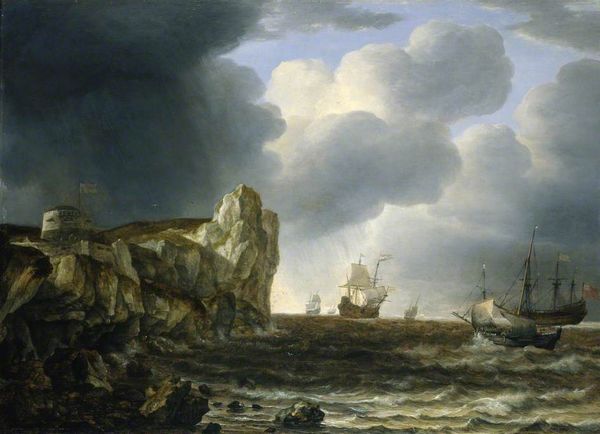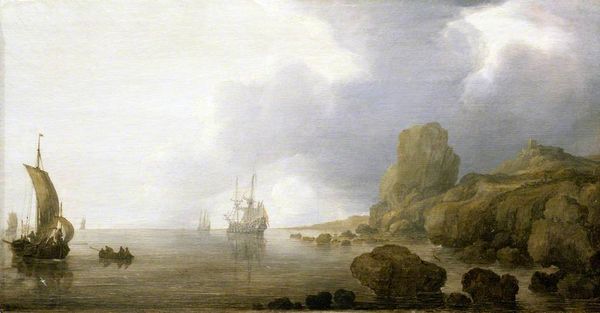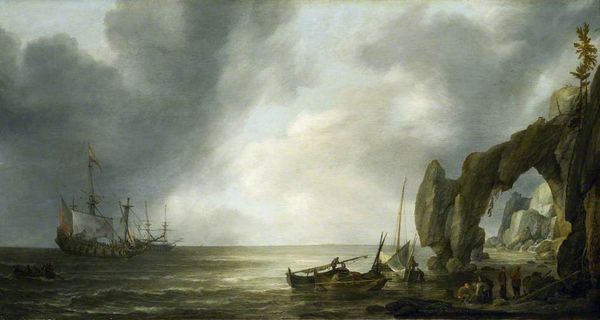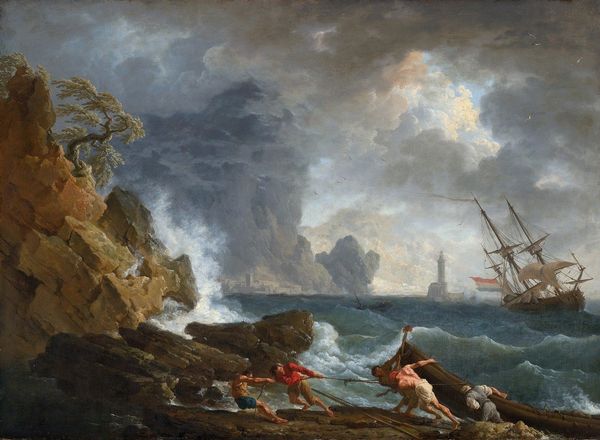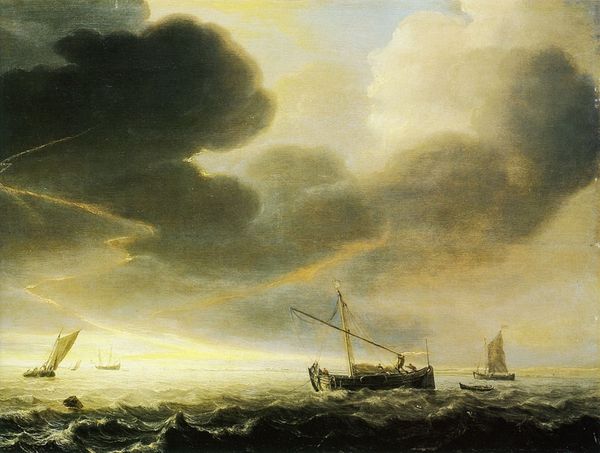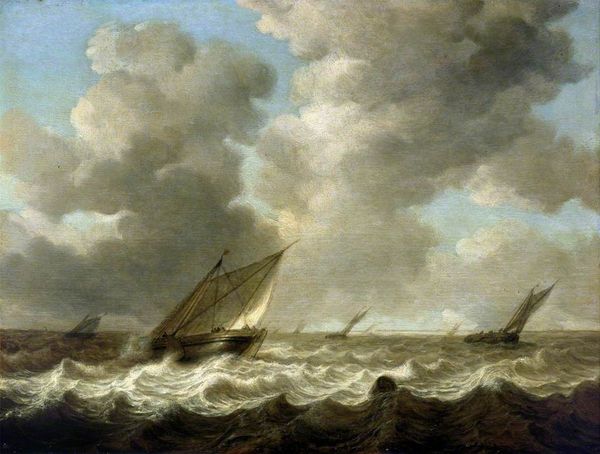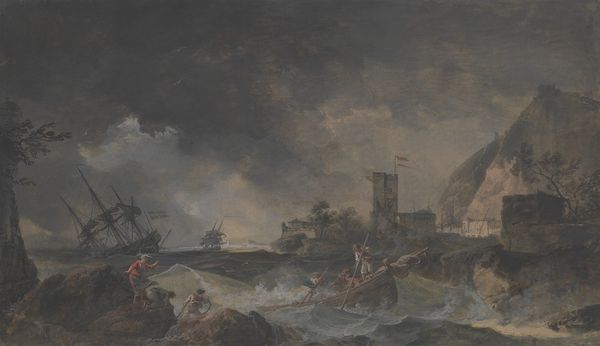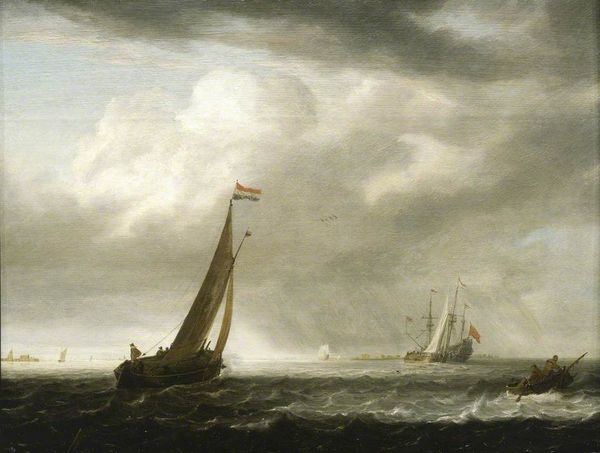
oil-paint
#
baroque
#
dutch-golden-age
#
oil-paint
#
landscape
#
oil painting
#
realism
Copyright: Public domain
Curator: Before us hangs "Dutch Ships Revictualling off a Rocky Coast," an oil painting created in 1637 by Simon de Vlieger. What's your first take? Editor: Bleak, but compelling. The sky is heavy, and the water rough. You can almost feel the chill of the sea spray. I wonder about the conditions of labour on those ships, so heavily dependent on weather and the sea. Curator: Exactly. The painting’s muted tones are fascinating, a study in grey, brown, and white. De Vlieger masterfully depicts various textures, from the rough, rocky coast to the relatively smoother surfaces of the ships. This evokes a sense of maritime materiality. Editor: Yes, and consider the historical context. This was the height of Dutch maritime power. This image isn't just about beautiful ships; it subtly reflects the economic engine driving the Dutch Golden Age, often at the expense of exploited lands and people globally. Revictualling – replenishing supplies – enabled further exploitation. Curator: True, it’s tied directly to trade and labour. Think of the pigments themselves, oil based paints dependent on production and the labour involved in sourcing materials from across the world. Look how the rigging is painstakingly detailed. Editor: It prompts questions of who benefits from this activity and what narratives are missing. We don’t see any of the enslaved people, Indigenous people, or others whose lives were impacted by the voyages represented here, or how trade affected different genders and ethnic or economic classes in port cities. The scene idealizes the process, which requires a broader lens. Curator: Fair point, it represents a very specific, elite viewpoint tied to Dutch mercantilism. How those ships get resupplied matters. Editor: These visuals often erase marginalized groups, especially women and people of color. We need to keep asking, "Whose stories aren't being told in this composition?" Whose perspectives are occluded here, in favour of representing Dutch power and a sort of colonial fantasy? Curator: I see the ships as testaments to craft and innovation. From a distance, though, understanding the process of its production, of global commerce, forces one to look much closer at the relationship between industry, environment and the labour of making. Editor: So, beyond the aesthetic and the artistic labor, the painting prompts deeper investigation into complex histories. The art becomes an entry point for understanding the legacy of colonialism and its continued repercussions today.
Comments
No comments
Be the first to comment and join the conversation on the ultimate creative platform.
